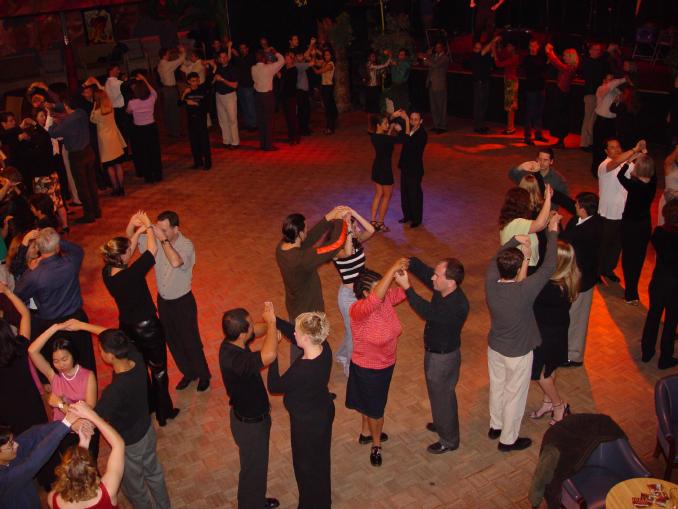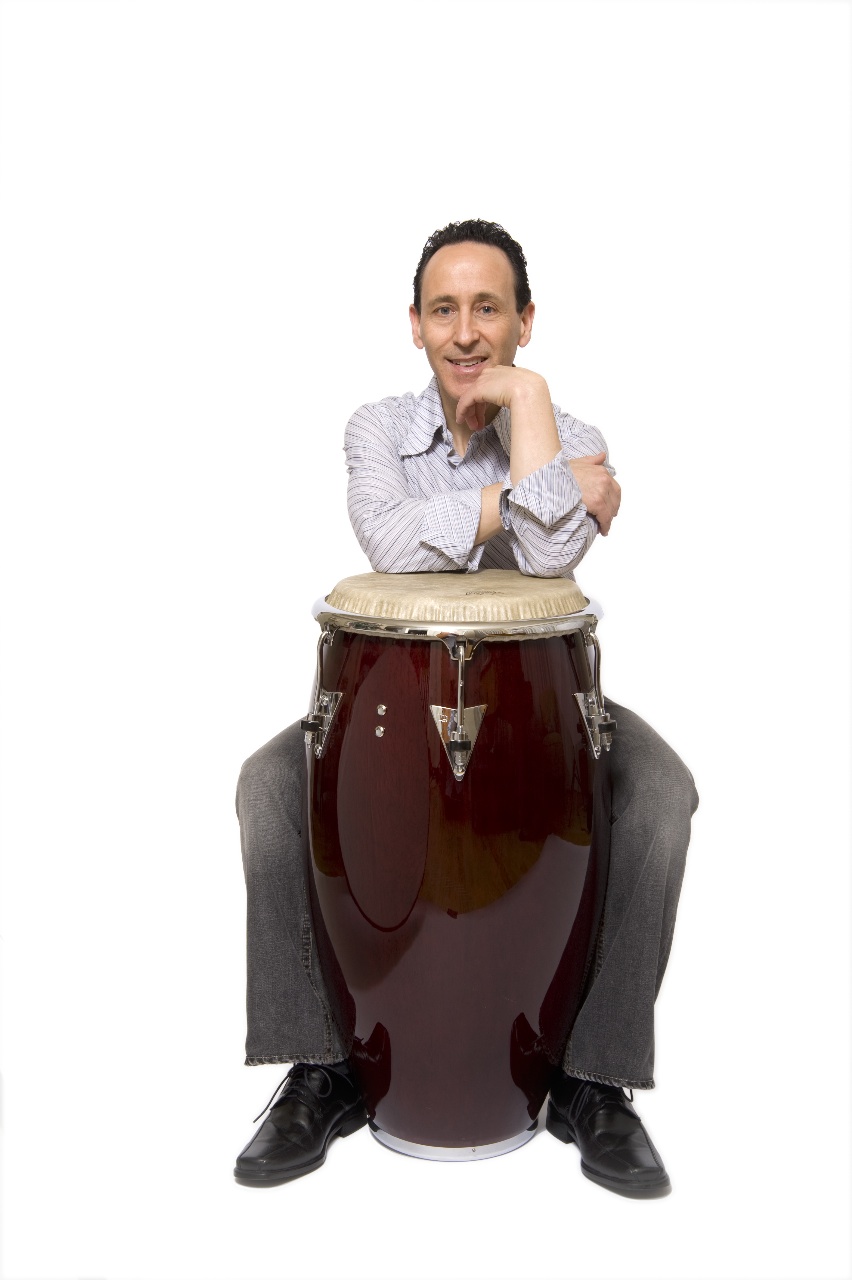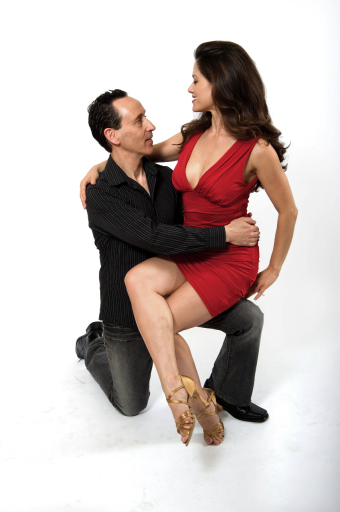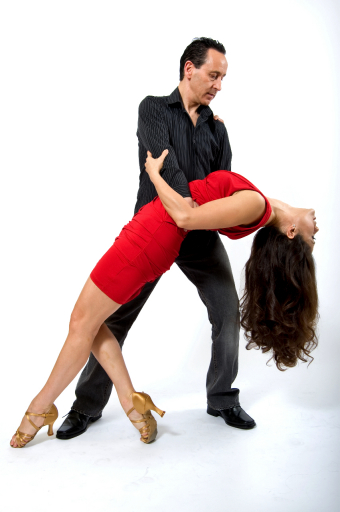What We Teach 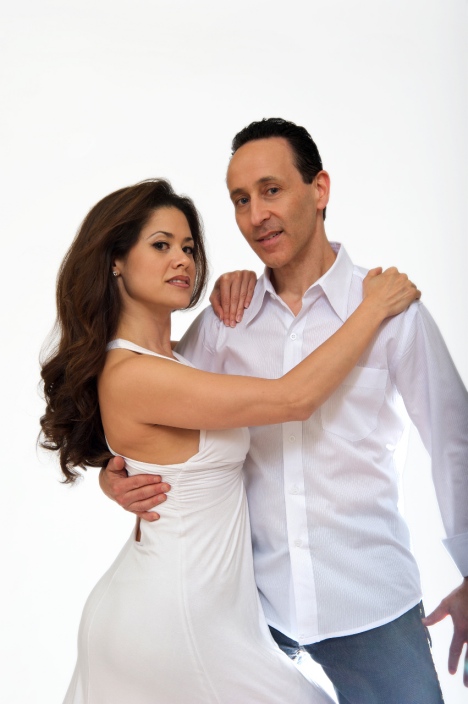
Why you're here:
(or looking at taking our salsa classes):
SalsabyJake
has developed great methods for dancing and teaching Salsa. We concentrate
on teaching the details and nuances of our technique so
that you can develop good basic dancing skills first. Sound's boring,
huh? Well not really - when you think about what makes the dancers
you appreciate great. By developing a solid skill-set for dancing
with a partner, you can focus your attention and energies when you dance
on the two most important things: (1) Your partner, and
(2) the Music! (not necessarily in that order)- rather than always thinking about
the dance - "what am I (or they) going to do next?" "Can I lead/follow
it?" "Does it look right?", etc. Dancers that hear the music
well and let it move them best express themselves and they are naturally the most
beautiful to watch - and have the most fun too. The fun is vital
to your presence on the dance floor and, if you build your confidence
by learning the important techniques, you can free yourself to have fun.
What about "attitude"?
Thereis plenty of "attitude" out there in the Salsa scene. Some of it, you don't want! -Like the dancers that spend all of their time showing off, doing acrobatics, or trying to prove they're better than everyone else. Doesn't that show through? The real attitude that is charismatic and makes people appreciate your dancing is the inner confidence you exhibit, your love and appreciation of the music when you're dancing, and your connection to your partner. That shines through much more truly and brightly. In a profile of Kofi Annan (former director of the U.N.) in the New Yorker (3/3/2003), author Philip Gourevitch describes Annan's interest in dance (yes, he dances) this way: "He loves to dance, and he does so with the sort of undemonstrative panache that draws one's attention as if by seeking to deflect it - through finesse and understatement, expressing warmth while manifesting cool." We're not sure if Kofi Annan dances Salsa, but this artful description certainly applies to many of the best Salsa dancers too...
How do I learn Style?
Thisis an interesting question that crosses the minds of many new dancers and experienced dancers that are looking to become more competent on the dance floor. The answer is simple: "You don't learn style". Style is an individual characteristic that can only develop when you possess both confidence and competence when dancing. It is an extension of your own personality. As such, you need to let it happen and focus on your dance skills first. It is certain that stylistic influences will play a role when you become more experienced and you try what you see others (role models) doing. But please remember that not all of what you see will work for you! If you force it, you risk looking like a "clone" dancer with no individual style. And bear in mind that a teacher who concentrates heavily on teaching Style to beginning/intermediate dancers is probably not doing a great service to those dancers, since they end up concentrating on superfluous styling rather than good dance skills. Dancers who focus too much on styling too early look mechanical, and very labored in doing a series of motions (you know - holding the fingers out a certain way, shoulder shimmy here, kick there - on every other step, etc...) that don't necessarily even fit them, while having difficulty in enjoying the dancing itself because of their shifted focus away from the music or their partner or movement. Salsa is very special, in that it HAS no particular style requirements - great for innovating dancers developing their own style!
Things that don't mix: Oil/Water. . . . Beginning Dancers/Styling Classes! Check out Jake's article about learning to dance and style in the first edition of the iSalsa magazine at www.iSalsa.net . .What we do for you...
We focus on social dancing and we believe in the great power of the partnership connection.This allows you to communicate through dance with people from around the world and speak (as to Salsa) what is rapidly becoming a worldwide language...
We try to teach you skill that will allow you to express yourself to the music, and develop your own unique style. We teach you how the dance ties in with the music. (Jake is also a musician). This also enables you to learn/absorb more from other dancers/teachers, etc. - even for other dances. Add to that a million great and original patterns that are accessible to dancers at all levels, and a deep understanding of the music, and it summarizes What We Teach...
For answers to many of the common questions we receive about learning to dance, please read the sections below...
![]() Back to top of SalsabyJake.com
Back to top of SalsabyJake.com
 Free dance and music tips!
Free dance and music tips!
Visit Jake's BLOG at blog.salsabyjake.org . . .
M I S C O N C E P T I O N S (Part I) 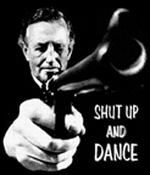
"I'm
just a follower, I don't need lessons..."
Jake's
snide reply: "But do you really follow everything?"
Followers DO need lessons, even though they do not need to remember patterns. Following
is a SKILL that needs to be learned and our lessons focus on that technique. Styling/ability
are also important parts of what you can get out of classes as you develop the basic skills. Just
look at the many ways a couple will do the same move (for example in a group class) and you'll realize how much
these play a role. By learning technique and developing styling, the men you dance with will know
they can do all of their material with you (a lot more fun for you) and you'll be able to enjoy
dancing and music more since you won't be distracted by stressing over whether you can follow
the leads given. We rotate partners in all of
our classes too: a vital part of learning to follow. Some things that
leaders do are "fashionable" or current and, some involve knowledge
on the part of followers (i.e. not 100% leadable on their own). This
is another reason followers need to take classes - to stay current.
M I S C O N C E P T I O N S (Part II)
"I've been dancing a while now. Lessons are no benefit"
Jake's more diplomatic reply: "Perhaps, but have you taken a class lately?"
It is absolutely true that you will pick up less new content in class
after many sessions, compared
to when you just began. But even if you learn the same pattern, your knowledge
of dancing will allow you to pick out more detail on the execution and styling
that could make a huge difference. There are many dancers out there who are so
close to dancing really well, but lack a few really important techniques
(they develop bad habits, so to speak). A tune up can go a long way to improve your dancing. Finally,
dancing can always get better. My partners and I are much better dancers than when we started,
and our classes have become more and more refined as a result. So, we are able to explain many of
the subtleties of the moves that can help you tremendously. And we work very
hard to explain everything (not common in the dance scene - in fact some teachers think that
would be a conflict of interest!). And besides, don't you just love my sick jokes???
For some of you reading this, the question may seem silly. While some people grow up with Latin music and rhythms, and moving to those sounds is as natural as breathing, others with no background may be drawn in by the look of the dance and seeing others enjoy themselves at a nightclub. Besides the very obvious social benefits and fun of dancing, Salsa, as we dance it is the essence of what is rapidly growing in popularity in the U.S. now . . . . PARTNER DANCING. Many people are re-discovering what we have known for quite some time now. It is great fun to dance in contact with someone else! Our style of dancing is quite technical, and the skills you develop learning it will help you throughout your life for any type of dance. Knowing the nuances of partner dancing will allow you to make that connection to your partner and music that is so satisfying. For some people, it is also a challenge just to LET GO in public enough to allow the expression that goes along with the dance. In that sense, dancing "pushes the envelope" of your personality, and builds confidence. The result is very beneficial as well. (The Zen of dance) Of course dancing can bring you enjoyment for your entire life, and everyone loves dancers. Go to any restaurant, party, or nightclub and get up to DO something when the music comes on, and watch everyone's eyes light up. . . Have I given you enough motivation yet?
Salsa is a street dance. As such there are no accredited teachers. So, look for experience in your teachers, and be sure they have the ability to convey to you the important aspects of the dance , so you can learn faster and in more detail, instead of spinning your wheels forever in class. You can learn a lot from different teachers too. So beware of teachers demanding your absolute loyalty because, besides reeking of self-interest, it limits what you can get from dancing, which is inspiration from a variety of sources, a sense of community, and socializing with everyone on the scene. The kind of competition that turns students against one another is very destructive to the dance community. Understand that each teacher will probably teach you what works for them, and that strictly speaking, there is no right or wrong. So, you might be advised differently by different teachers, and you will have to decide what is best for you. All in all, you should look for sources to help you get more comfortable with your own dancing, and promote the fun, social life, and relaxation that dancing provides most of us. And if you're motivated to perform or compete, ensure that you don't leapfrog the basics and go directly to the "flash". The basics enable you to do the hard stuff and they provide you with a longer lasting skill-set than a bunch of show moves... Avoid teachers that let you get away with things like dancing off-beat. That is not in your interest and essentially trains you do repeat mistakes! Finally, look for a teacher that can explain WHY they want you to do things a certain way, rather than simply saying "Do this" or "Do that". There are reasons that make sense for dancing well, just like a coach has reasons for advising an athlete on how to do things well.
Salsa still is THE Partner Dance...
Salsa is one of the most sensual, fun, and exciting forms of partner dance today. So remember: to be a good Salsa dancer, you MUST learn to dance with others! It is quite simple: if you have good dance skills and good partner skills, you can dance with even a total stranger and have fun (which is part of the mystique). HOW TO RATE A GOOD TEACHER: This is a complicated issue, but besides just enjoying their classes - be SURE that you can dance with others when you go out dancing! If you learn skills only applicable to a small group of dancers, then there is a fundamental flaw in what you're being taught! Be sure you can apply your skills to dance with anyone, anyplace. Don't let the "partner"in partner dancing become secondary.
"How long will it take me to get 'good' ?"
The time it takes to learn something is different for everyone, since everyone is different! MANY people ask this question, but there is no set rule for how long it will be until you've "learned"since as with many skills or arts, you continue to learn throughout your life. In terms of the basics and reaching a certain level of expertise, the time it will take you depends on many things, including your previous experience with dance, knowledge of music, how much you enjoy the learning process, how often you go out dancing, whom you dance with and take classes from, and how hard you apply yourself. So, there is no real set answer. But as long as you are learning and improving and having some fun, that in itself usually provides enough enjoyment to keep you highly motivated! And remember, the goal is not to simply learn dance steps/patterns, but to achieve a level of skill that will allow YOU to express yourself and have some fun out there...
"Which timing should I learn?"
If you don't understand this question, let me start with a short explanation.
Dancing on the West coast has been mainly "on-1" timing
(short for "breaking on 1", the "break" being when
your legs step apart)) over the years until recently. This is what we teach
in our classes and it is the focus of many of the powerhouse teachers
in Los Angeles as well. But on the East coast, things are different.
Salsa is really an outgrowth of Mambo and New Yorkers (about 1/2 of
them anyway) dance a different step and timing called "on-2".
(There are different types of on-2 timing also, but the dominant form
is actually the most recent one taught by Eddie Torres in NYC) With
the explosion of Salsa popularity in recent years, the world has become much smaller,
with teachers traveling
all over the globe to spread their styles. This affected California
as well, with some teachers adopting the on-2 style here and teaching
it (as gospel in some cases) in their classes. It tends to be embraced
more by the "serious" dancers than the average club dancer.
What should you learn? One downside of the
variety is compatibility. You cannot dance on-1 with someone who only
dances on-2 or you will
be bumping into each other on every measure! Here on the west coast,
a typical nightclub will mainly be populated by on-1 dancers, and hence
we still recommend that as the best way to learn and find plenty of
social dance partners. Even the on-2 teachers (teachers that focus
on that timing) mainly teach on-1 in club gigs they do for that
reason. Our classes are on-1 timing. If you're looking to expand
your horizons to learn the whole gamut of things out there, and have
the ability to dance with anyone anywhere, then clearly you will want
to learn both timings. How do you learn both timings? The
answer to this is personal and it depends on which teachers you follow.
One thing that is very confusing about the two styles is that the
techniques taught are VERY different, even though they accomplish
the same thing (to dance with a partner). Trying to absorb both timings
as a beginner can be very challenging and perhaps frustrating to the
point of failure.
We suggest that you learn one timing or the other well,
before attempting to incorporate both into your abilities.
We tried on-2 timing years ago and found this confusion too. However,
if your dance skills are solid,
including having impeccable timing with the music, the transition from
one to the other will be very easy. So, "LEARN ONE first and then
try the other" is our advice. Patterns vary between the two styles
too, but those are much easier to deal with if you are
already an experienced dancer.
Beware of teachers claiming that one is more correct than the
other! This is divisive to the dance community and
it simply has no real basis. While Mambo may be on-2, there are scores
of wonderful dancers that express the music clearly through on-1 dancing.
Another argument is that the "clave is on-2". The clave is
the basis of Latin musical styles so it is important indeed. But the clave has
two styles too - one starting on the first beat and the second starting
on the second beat of a musical measure! These conflicting facts and
points of view obscure the basis of all dancing: To express the music
well, which can be done with a large variety of timings. For social
dancing however, you have to dance what your partner is dancing to
communicate. So, keeping the number of these timings to a minimum is
very useful! Personally, I view the two dominant timings as two flavors
of ice-cream. Both are enjoyable and just taste a little different.
For more information on musical terms, see our Where's
the Beat? page.
Calling all salsa dancers...
While we don't claim to "know it all", we are very confident in our analytical skills when it comes to partner dancing. We also see many dancers that have been dancing for years that could benefit greatly by a small tune up in their techniques. So, while we don't solicit private lessons aggressively, we can't help but notice how we could offer help, and we'd like you to consider a private, whatever your level, to get a fresh perspective and possibly improve your dancing and fun greatly... Jake says: "Give me an hour and I'll change your life!" (Yeah, right. I've heard that one before!)
![]() Back to top of SalsabyJake.com
Back to top of SalsabyJake.com
